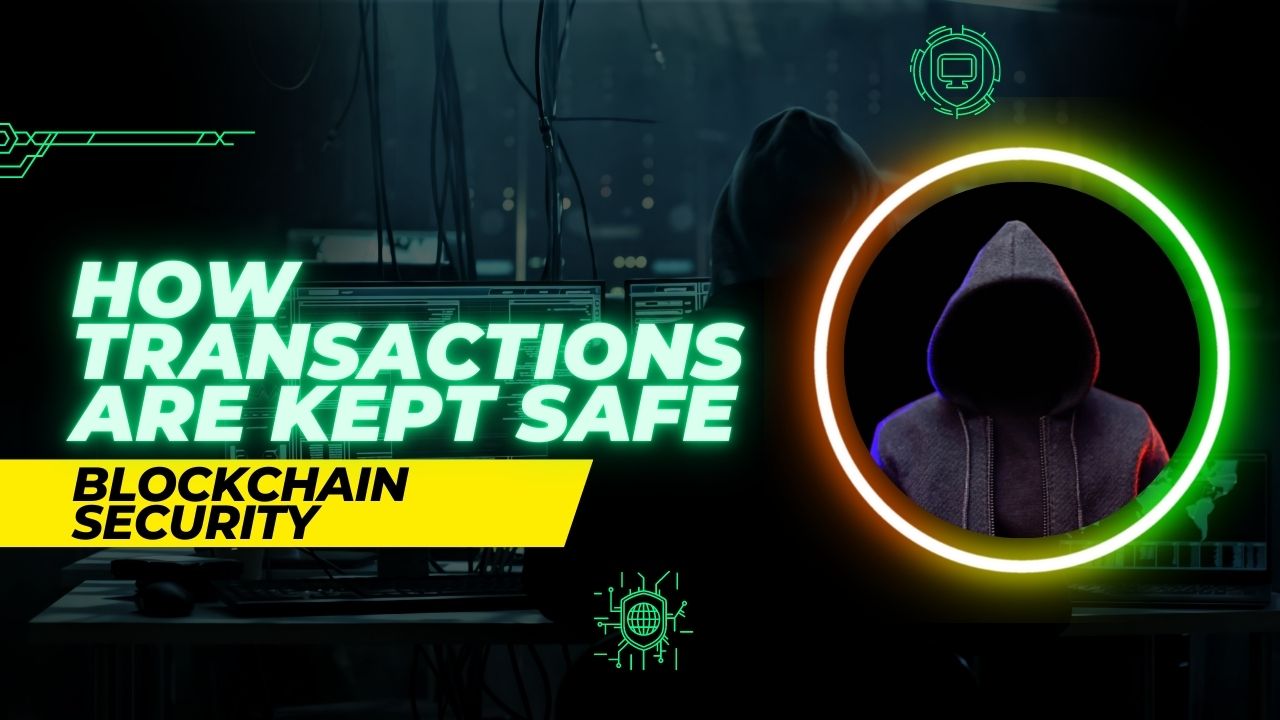Blockchain is a decentralized digital ledger that records transactions between two parties in a secure, tamper-proof way. For a transaction to be added to this distributed network, it must be verified by a majority of computers on the network. This verification process at the core of blockchain security is known as “mining” or “staking”
Once a transaction has been verified and added to the blockchain, it cannot be altered or removed. Thus, blockchain is an ideal platform for conducting secure financial transactions.
However, not all blockchains are created equal.
Blockchain transactions on these platforms have different particularities and, therefore, different security vulnerabilities. We’ll discuss these below.
Types of Blockchain Networks
Blockchain safety depends on the networks you’re using because these networks have different participants and protocols regarding data access/record keeping. These two variables dictate four categories of networks (and transactions), each with its blockchain security vulnerabilities.
Blockchain transactions according to the type of users:
- Public
- Private
Blockchain transactions according to membership and access privileges:
- Permissioned
- Permissionless
Public
A public network is a decentralized, distributed ledger system that allows anyone to join the network and participate in the consensus algorithm. These networks use a variety of consensus mechanisms, such as proof-of-work or proof-of-stake, to validate transactions and add new blocks to the chain. Bitcoin and Ethereum are examples of public networks.
Public blockchain networks are often lauded for their security, transparency, and immutability. However, they can also be subject to forks or splits in the chain due to disagreements among miners or developers.
Besides, the public blockchain has few verification processes for identity and access control, primarily relying on public keys.
Private
A private blockchain is a permissioned network where only selected participants are allowed to access the data and take part in the consensus process. This type of network is often used by organizations that need to share sensitive data with a limited number of users.
There are two main advantages of private blockchains:
- They tend to be more scalable than public blockchains. Not everyone on the network has to validate every transaction, which can help to improve performance.
- They can be customized to meet the specific needs of an organization. For example, a company might use a private platform to keep track of its supply chain or reduce the risk of fraud.
However, private blockchains are not as secure as public ones because they are not decentralized and can be subject to a single point of failure.
Permissionless
A permissionless blockchain network is a decentralized network that anyone can join and contribute to. No central authority controls it. Anyone can validate transactions and add new blocks to the chain.
Thus, permissionless blockchain networks are highly resistant to censorship and tampering.
Because anyone can participate in a permissionless blockchain network, they are often considered more democratic than their permissioned counterparts. However, this also means that permissionless blockchain networks are more vulnerable to malicious actors.
Permissioned
A permissioned blockchain network is a distributed ledger technology that allows only certain users to access the network and participate in the consensus process (think intranet vs. internet). Unlike permissionless networks like Bitcoin, which anyone can join, a permissioned network requires participants to be pre-approved by the network administrator.
Permissioned blockchains are often used by businesses and organizations that need to maintain control over who can view and update the ledger. While this may seem like a disadvantage, permissioned blockchains offer several benefits, including improved security, scalability, and privacy.
Consortium
Consortium blockchain networks allow organizations to manage a blockchain network while remaining decentralized cooperatively. These networks require member organizations to pre-commit resources to the network, such as computing power or storage. Therefore, the blockchain always has enough resources to process transactions and remain secure.
Consortium blockchain networks also allow member organizations to control the network’s rules and governance. This increased customization according to their specific needs, increases the blockchain security and performance.
Consortium blockchains are often used by large enterprises, such as banks, to create private blockchains that meet their specific requirements. However, these networks can also be used by small businesses and individuals who want to cooperate in managing a shared blockchain.
Types of Compromised Data
Let’s review the main types of blockchain security issues:
Code Exploitation
Code exploitation entails finding vulnerabilities in a blockchain’s code and using them to steal funds or disrupt the network. While the decentralized nature of blockchain technology makes it resistant to many attacks, code exploits can be particularly damaging due to the difficulty of patching them.
As a result, code exploiters have been able to cause billions of dollars in damage to the cryptocurrency industry.
Stolen Keys
In the blockchain world, “stolen keys” refers to private keys that have been lost or stolen. This can happen if someone’s computer is hacked or loses their physical key. When a private key is stolen, the thief has access to all the associated cryptocurrencies in their wallets – which can be a lot of money.
Lost keys are a significant problem in the blockchain world, and various initiatives are underway to address this issue.
- Use hardware wallets, meaning offline devices that store your private keys. Even if your computer is hacked, the thief would still need physical access to the hardware wallet to steal your coins.
- Use “cryptocurrency insurance.” This method entails paying an insurance company to cover the value of your coins when they are lost or stolen.
While there is no foolproof way to prevent stolen keys, these solutions can help to minimize the risk.
Types of Cyber Attacks
The most common cyber attacks causing blockchain security issues are:
Phishing
One way that attackers carry out phishing attacks is by creating fake websites that look identical to legitimate ones. They then use these websites to lure users into providing personal information or sending cryptocurrency to a phony account.
Another common tactic is to send spoofed emails that appear to come from a trusted source. These emails often contain links or attachments that, if clicked, will install malware on the victim’s computer.
Phishing attacks can be challenging to detect, but you can protect yourself by following the steps below:
- Be suspicious of any unsolicited emails or messages that contain links or attachments.
- Never click on links or download attachments from untrustworthy sources.
- Check the URL of a website before entering any sensitive information.
Routing Attacks
A routing attack entails intercepting the transactional data transfers on their way to the Internet Service Providers. Unfortunately, chances are you won’t notice anything wrong.
Sybil Attacks
Public blockchains, especially larger ones, require more computing power. Unethical miners can seize more than 50% of a blockchain network’s mining power by joining their resources. Also called 51% attacks, the Sybil security threat cannot affect a private blockchain network.
51%
The 51% attack entails occupying the network with a massive amount of false identities. This strategy ultimately crashes the system.
What Is Blockchain Security?
Blockchain security relies on the decentralization of blockchain. Hackers who want to alter transactions to their benefit need to seize over 50% of the computers in a distributed ledger.
Blockchain security is based on cross-checks across participating nodes. Users verify each other, ousting potential hackers. But that’s not the only way in which blockchain safety works.
Other security solutions include:
Verifying Transactions
How does Blockchain verify transactions?
Essentially, each transaction is verified by a network of computers or “nodes.” When a new transaction is created, it is broadcast to the network and verified by the nodes. Once verified, the transaction is added to the blockchain, a public record of all trades.
Blocks are chained together, verified by digital signatures, and cannot be altered retroactively. Since the entire process is transparent and trackable, it helps create trust between parties.
Preventing Double Spending
Blockchain also prevents “double-spending” attacks wherein users will try to spend their crypto simultaneously in multiple places. Here’s how:
- Blockchain participants in a network have to reach a consensus on all transactions.
- Before being accepted, these blockchain transactions go into a sort of “escrow” – a pool of unconfirmed transactions.
- The second exchange can’t fit into this chain after the first one is confirmed and added to the blockchain.
Penetration Testing
In the most basic terms, blockchain penetration testing is checking a blockchain system for vulnerabilities. Whether manual or automated, the goal is always to identify any weaknesses that malicious actors could exploit.
While penetration testing has traditionally been used to test traditional computer systems, the rise of blockchain technology has led to a need for specialized tools and techniques.
Cyber security professionals must track data across multiple nodes and identify patterns of behavior that could be exploited to find vulnerabilities.
Here’s how it’s done:
- Gather information about the business.
- Model potential threats.
- Conduct active testing and discovery.
- Leverage security weaknesses found in the previous stage.
Security Controls
Other blockchain solutions that prevent blockchain security issues regard installing identity and access management controls that protect confidential data. These blockchain technologies aim to prevent data breaches and information security issues.
- Employ specific tokens for user authentication and authorization (e.g., OAUTH, OIDC, and SAML2).
- Leverage privileged access management to ensure the ledger entries are secure.
- Employ API security best practices.
- Use cloud computing.
Wrap Up
All in all, blockchain technology has several inherent security qualities. Multiple nodes verify each transaction, making it nearly impossible for cyber criminals to tamper with the data.
However, no system is perfect, and there have been a few instances of attacks on blockchain platforms.
To ensure the safety of your data, it’s essential to choose a reputable blockchain platform and take steps to keep your information safe. For example, you should never store your private key online or share it with anyone. You should also employ cyber security professionals for rigorous testing.
By following these simple tips, you can help keep your data safe and secure.

Rapid Innovation helps businesses like yours build beautiful, user-friendly blockchain apps – no technical knowledge required. They help you go from concept to launch – with as little as an idea.

